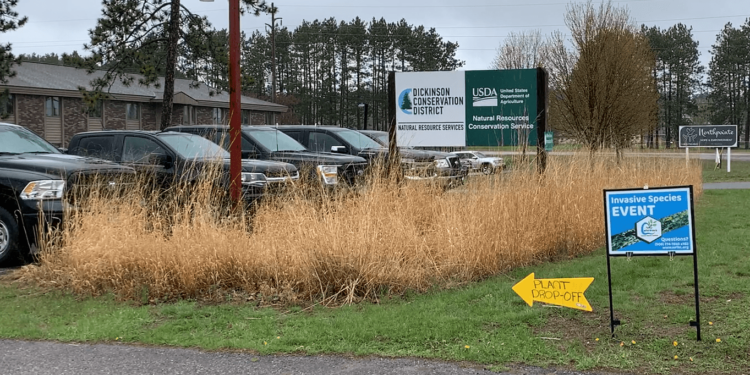KINGSFORD, Mich. (WZMQ) – In a proactive effort to combat invasive species, the Wild Rivers Invasive Species Coalition launched an Invasive Plant Trade-In event in Dickinson County.
“At the Dickinson Conservation District Monday through Saturday, you can bring in invasive shrubs that you removed from your landscape and receive a monetary voucher of 5 dollars to use towards the purchase of a replacement,” announced Katherine Mentel, a WRISC Project Manager.
The initiative allows anyone to exchange invasive plants or shrubs from their yards for up to 50 dollars in vouchers, redeemable for new native plants.
“You can only receive up to $50 for the program, so that’s like 10 plants, but you’re more than welcome to bring in as many plants as you’d like. We just give up to $50 in vouchers,” Mentel clarified.
Project managers emphasized targeting invasive landscape shrubs like burning bush, autumn olive, bush honeysuckle, or buckthorn. Highlighting the urgency, Mentel singled out the Japanese barberry as a significant threat due to its role in increasing tick populations.
“This one is a real threat because it also increases the risk of ticks in an area, and it can increase their populations. Just because of how the plant grows, its arching branches actually create like a microclimate that a lot of small mammals and rodents like, which carry ticks on them. And so it has kind of been connected to an increase in deer ticks, which carry lymes disease.” Mentel explained.
The trade-in opportunity extends until Saturday at the Conservation District in Kingsford. Vouchers obtained can be redeemed at various local participating greenhouses, including Chenier’s, Flowerland, Danielson’s Greenhouse and Floral, and the Dickinson Conservation District’s native plant sale, among others. Similar events are also scheduled across the five counties WRISC covers, fostering a collective effort to preserve native ecosystems.
For more information on research linking the Japanese Barberry to ticks and tick-borne illnesses, visit:
For more information on the Wild Rivers Invasive Species Coalition, visit:


















